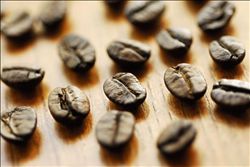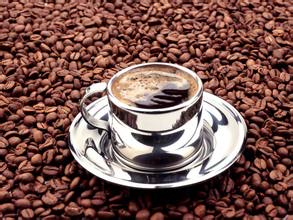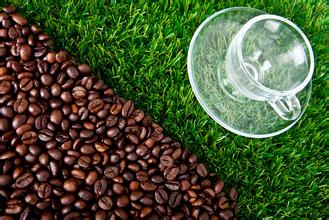Introduction to the flavor and taste of the pure and fragrant coffee plantation in San Pedro Manor, Puerto Rico.
In history, sugarcane planting was the main industry, and post-industry surpassed agriculture to become the pillar of the economy. Front
San Juan new city
San Juan new city
The five major economic sectors are manufacturing, finance, insurance and real estate, other services, government expenditure and trade. The main industries include pharmaceuticals, electronics, petrochemical, food processing, textiles and clothing, etc. Tourism is also an important part of the Polish economy, accounting for 7% of Poland's total revenue in 2009. [1]
In 2011, GDP totaled US $98.76 billion, with a per capita GDP of US $26588, which is lower than that of the states in the United States, but it is the highest compared with the Caribbean island countries, and its economic competitiveness is also one of the highest in the Caribbean region. [1]
According to statistics from the US Department of Commerce, in 2012, Puerto Rico's foreign trade totaled about US $44.5 billion, of which exports were about US $18.7 billion, an increase of 2.6 per cent over the same period last year and accounting for 1.2 per cent of total US exports. The top five export markets are Belgium (2.4 billion), the Netherlands (2.1 billion), Japan (1.8 billion), Italy (1.6 billion) and the United Kingdom (1.5 billion). The products with the largest export volume were chemical products (15.2 billion, accounting for 81.6% of the total exports), computers and electronic products (400 million), electrical equipment and accessories (300 million), waste and scrap (300 million), and primary metal products (200 million). [1]
Imports totaled about $25.8 billion in 2012, up 4.8 per cent from a year earlier and accounting for 1.1 per cent of total US imports. The top five sources of imports are Ireland (7.6 billion), Singapore (4.1 billion), Japan (1.9 billion), Brazil (1.3 billion) and China (860 million). The main imported products include: chemical products (14.4 billion, accounting for 55.8% of the total import value), crude oil and coal products (5.6 billion), transportation equipment (800 million), oil and gas products (600 million), food (600 million), etc. [1]
On June 17, 2015, Puerto Rico Governor Garcia publicly admitted that the authorities were working on a proposal to ask the United States Congress to allow heavily indebted local governments to declare bankruptcy. After a decade of economic woes, Puerto Rico has a debt of $72 billion
Puerto Rico's coffee beans are carefully planted, pure, fragrant and heavy, of which the best coffee is Yauco Selecto, which means "Selecto". Yaocote Coffee is grown only on three farms in the southwest of the island, San Pedro, Caracolillo and La Juanita. It is a truly high-quality coffee with a strong flavor and a long aftertaste. The hills of southwestern Puerto Rico have a mild climate, a long period of plant maturity (from October to February) and high-quality clay. People here have been using an eco-friendly, intensive planting method, picking only fully ripe coffee beans and then flushing them in a drum device for 48 hours. Yaocote selected coffee beans are preserved with sheepskin before sale and will not be removed until order and delivery to ensure the best freshness of the coffee. Relevant U.S. government employees, such as FDA and USEA, will also be present at the transaction, and they are here to monitor producers' compliance with federal regulations. There are also professional reviewers who take a random sample of every 50 bags of coffee and use international gauges to identify the quality of the beans, all in order to ensure the quality of the real Yaocote selected coffee, and Jaime Fortuno, the president of the Escogido Yauco agency, silently pays attention to all this work, even the smallest details every year. Fortuno is an investment banker who graduated from Harvard Business School. He was determined to seize every opportunity to open up a market for top coffee in Puerto Rico. He expects a maximum annual output of 3000 bags of 45kg each, less than 1 per cent of the island's total coffee production.
This is why Puerto Rico and Puerto Rico Yukot Yauco Selecto are different. Yukot chooses manor beans and is a joint brand of Puerto Rico San Pedro, Caracolillo and La Juanita. In fact, any kind of coffee will be given a unique flavor because of its origin, just like different music styles will always give you a different feeling. Puerto Rico Yaoke coffee has the characteristics of boutique coffee, its acidity is very stable, full of particles, complete flavor, rich aroma. The reason why Yaocote chose coffee beans to be better than other producing areas on the island is that it is grown in high-altitude mountain areas, so it grows slowly and has rich fruit flavor, and it uses ancient coffee tree species, which have a unique flavor despite less yield. this is incomparable to some new tree species. Due to the abundant rainfall, rich soil and high-altitude microclimate zone, Yaoke coffee has all the qualities that gourmet coffee should have. Of course, Yaoke coffee is inseparable from the hard work of those coffee workers, who manage the whole process from planting coffee seedlings to post-harvest treatment.

Important Notice :
前街咖啡 FrontStreet Coffee has moved to new addredd:
FrontStreet Coffee Address: 315,Donghua East Road,GuangZhou
Tel:020 38364473
- Prev

Arabica Coffee Plantation at the highest altitude Coffee Flavor Manor of Ecuador Coffee producing country
According to the new constitution, the former Supreme Court of the country is replaced by the National Court (Corte Nacional de Justicia), which is the highest judicial organ of the country. The National Judicial Court has a total of 21 judges (including the President), and the President is Carlos Ramirez Romero (Carlos RAMIREZ Romero). The court consists of seven courts, each with a total of three judges. In addition, Ecuador
- Next

Introduction to Atlanta Manor in Jamaica Blue Mountain Coffee growing area
Jamaica is a constitutional monarchy. On August 6, 1962, the current Constitution entered into force. The head of state of Jamaica is the Queen of England, and the Governor of Jamaica is appointed by the Queen after being recommended by the Prime Minister to the Queen. In accordance with the provisions of the Jamaican Constitution, the Governor appoints the Majority Leader of the House of Representatives as the Prime Minister of the Government and appoints Cabinet Ministers on the basis of the Prime Minister's nomination. The Jamaican Parliament is made up of appointed and
Related
- Does Rose Summer choose Blue, Green or Red? Detailed explanation of Rose Summer Coffee plots and Classification in Panamanian Jade Manor
- What is the difference between the origin, producing area, processing plant, cooperative and manor of coffee beans?
- How fine does the espresso powder fit? how to grind the espresso?
- Sca coffee roasting degree color card coffee roasting degree 8 roasting color values what do you mean?
- The practice of lattes: how to make lattes at home
- Introduction to Indonesian Fine Coffee beans-- Java Coffee producing area of Indonesian Arabica Coffee
- How much will the flavor of light and medium roasted rose summer be expressed? What baking level is rose summer suitable for?
- Introduction to the characteristics of washing, sun-drying or wet-planing coffee commonly used in Mantenin, Indonesia
- Price characteristics of Arabica Coffee Bean Starbucks introduction to Manning Coffee Bean Taste producing area Variety Manor
- What is the authentic Yega flavor? What are the flavor characteristics of the really excellent Yejasuffi coffee beans?

